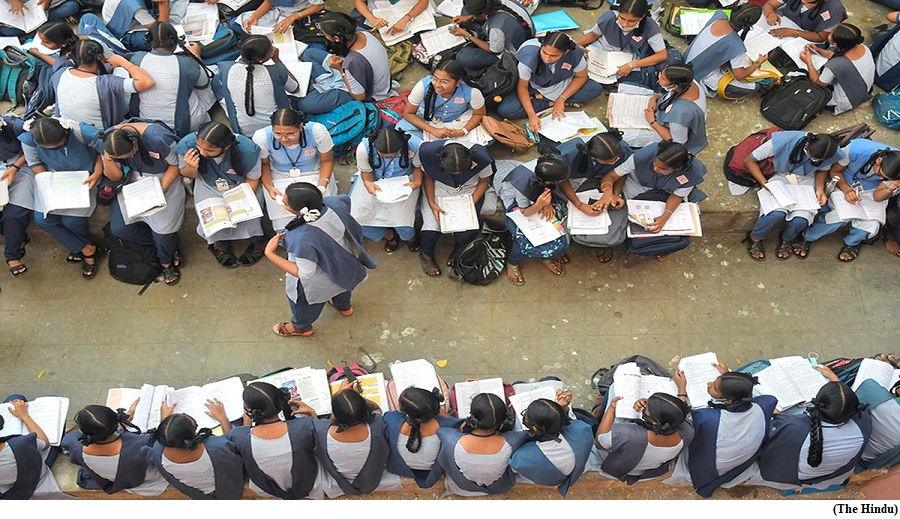Amplify the subject of adolescent girl nutrition (GS Paper 2, Health)

Context:
- To unlock the full potential of India’s future, there is needto prioritise the health and nutrition of its adolescent girls.
Potential of Adolescence:
- Adolescence is a pivotal period of cognitive development and, therefore, improving access to nutrition during this “second window of opportunity of growth” compensates for any nutrient deficiencies acquired during early developmental stages in the girl child.
- Furthermore, adolescent health is a significant indicator of women’s labour force participation in India in the long term, as better nutrition improves every young girl’s prospect to participate in productive activities.
Nutritional concern in Adolescent girls:
- Adolescent girls are particularly vulnerable to undernutrition and anaemia due to the onset of menstruation.
- The findings of the National Family Health Survey-5 (2019-21) confirm these concerns, as a staggering 59.1% of adolescent girls were found to be anaemic.
- With the NFHS-4 numbers also having reported over 41.9% of school-going girls as underweight, the numbers showcase a worrying trend. What makes the situation more complex is the fact that a range of factors, from environmental conditions to cultural norms that lack a gender-neutral environment within a household, affects the nutrition uptake in adolescent girls.
- While progress has been made in improving crucial health indicators in the form of various government initiatives that have successfully achieved optimum coverage, it is however essential to acknowledge that current health interventions do not specifically focus on the nutritional statuses of adolescent girls.
Long term consequences:
- Poorly balanced and insufficient diets can lead to cognitive impairments that affect one’s academic performance. This can result in lower educational attainment, which can limit opportunities for employment and economic self-sufficiency later in life.
- Undernourished adolescent girls are also at a higher risk of chronic diseases and pregnancy complications, which can lead to a higher health-care burden on both families and communities, potentially leading to financial instability and increased poverty.
- If girls are less healthy and less educated, they are less likely to participate fully in society, whether through work, politics, or community involvement.
Convergence of various initiatives:
- A few strategic modifications to existing interventions can significantly expand the scope of its outcomes.
- The convergence of various government initiatives such as the Scheme for Adolescent Girls (SAG) within the umbrella of the Prime Minister’s Overarching Scheme for Holistic Nutrition programme (POSHAN) 2.0 is a step in the right direction, provided it is implemented effectively.
- Targeted adolescent-oriented schemes such as the Rashtriya Kishor Swasthya Karyakram (RKSK) could include even stronger awareness and nutrition education programmes that would help sustain beneficiary compliance.
- Targeted and regionally contextualised Social and Behaviour Change Communication (SBCC) efforts around adolescent girls’ nutrition are sure to generate greater demand and the adoption of good practices.
- For improved outcomes, it is very imperative for effective convergence and collaborations among all the relevant departments, in a way that fosters a collective endeavour.
- Routine training of health workers for effective implementation and monitoring of various schemes, and to adapt with an evolving landscape, is also a crucial step in this process.
Use evidence and data:
- A holistic narrative on adolescent girls’ nutrition, explaining its linkages with overall mental and physical well-being, individual productivity and overall economic growth of the country is needed.
- This must be packed with evidence/data that effectively appeals to all, to those outside the technical community, and must be framed to make it actionable. This also immediately brings about the need for disaggregated data that allows for effective interpretation.
Way Forward:
- It is crucial to acknowledge that tackling the complex issue of nutrition among adolescent girls is not just a health concern, but is an investment in the future of the nation.
- India have an enormous responsibility, as well as a tremendous opportunity, to ensure the welfare and the upliftment of the nation by prioritising the nutritional needs of India’s girls.


